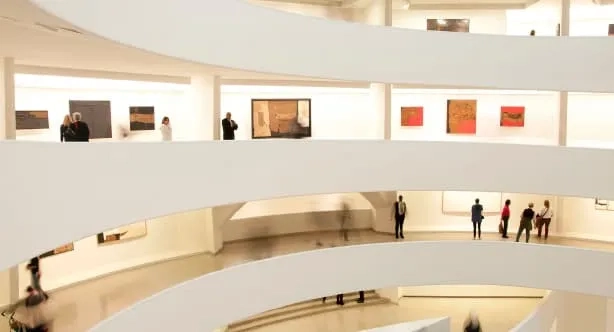Behind the walls of museums and the closed doors of galleries lies an unknown world: the storage and transportation of artworks. These precious objects, witnesses to history and human creativity, require special care to travel through time and space without damage. This article takes you into this world of expertise, where every detail matters in preserving the integrity of artistic treasures.
Storage: A Custom-Made Sanctuary
Before traveling the world or being exhibited, artworks find refuge in places specifically designed to preserve them. These secure warehouses are much more than simple storage spaces; they are true sanctuaries for artistic heritage.
Controlled Environmental Conditions
Artworks are extremely sensitive to temperature variations. Inappropriate temperature or humidity can cause irreversible damage. Storage spaces are equipped with sophisticated control systems that maintain constant temperature and humidity. Special filters also protect the works from dust and atmospheric pollutants.
Enhanced Security
The inestimable value of artworks makes them potential targets for theft or vandalism. Storage facilities also have advanced security measures: 24/7 video surveillance, sophisticated alarm systems, biometric access controls, and more. Particularly valuable works are kept in reinforced vaults, offering maximum protection.
Management and Traceability
Managing collections is another important aspect of storage. Specialized software allows for tracking each work’s location, condition, storage conditions, and scheduled movements. This traceability ensures that nothing is left to chance and that each piece can be located and inspected at any time.
It is therefore crucial to seek the expertise of an art storage specialist to ensure their conservation and security.
Transporting Artworks: An Extraordinary Journey

After their stay in storage, artworks are often called upon to travel for exhibitions in museums, galleries, or international cultural events. The transportation of these pieces is another delicate operation that requires particular expertise.
Meticulous Preparation
Before even leaving the storage location, the artwork undergoes a series of checks. Conservation experts examine its condition to detect any fragility or pre-existing damage. A detailed report, including photographs, is drawn up to serve as a reference before and after transport.
Custom Packaging
Each artwork is unique and requires tailored packaging. Specific materials are used to protect the work from shocks, vibrations, and temperature and humidity variations. Transport crates are often custom-made with sophisticated cushioning systems. Sensors may be integrated to monitor environmental conditions in real-time.
Specialized Vehicles
Artworks travel in specially equipped vehicles. Air-suspension trucks, climate control systems, and anti-theft devices ensure smooth and secure transportation. For international trips, air or sea transport is arranged with the same attention to detail.
Fairs, Conferences, and Exhibitions: Major Logistical Challenges
During major artistic events such as fairs, conferences, or exhibitions, the logistical challenge is even greater. The transport and temporary storage of numerous artworks require flawless coordination.
Planning and Coordination
The success of an event depends on meticulous planning. Specialists work closely with organizers to manage schedules, transport routes, specific artwork requirements, and the constraints of the exhibition site.
Installation and Dismantling
Professionals are also responsible for installing the artworks on the event site. This involves the careful handling of pieces, setting up exhibition supports, and adhering to safety standards. After the event, they handle the dismantling and return of the works to their storage location or owner.
Art Logistics Professionals: Guardians of Heritage
Behind every transported or stored artwork is a team of passionate professionals. Logisticians, transporters, packers, conservation-restoration experts, and curators all work together to ensure the safety of the artworks.
Multiple Skills
Art logistics professionals possess varied skills: in-depth knowledge of art history, mastery of packing techniques, a sharp sense of logistics, and the ability to manage unforeseen situations. Continuous training is necessary to stay at the forefront of best practices.
Coordination and Communication
The success of a transport or storage operation depends on perfect coordination between all involved parties. Communication is essential to anticipate problems and ensure quick decision-making in case of unexpected events.
In conclusion, the storage and transport of artworks are complex operations that involve experts passionate about preserving heritage. Unveiling these behind-the-scenes operations helps to better understand the importance of their role and the challenges they face daily so that art continues to travel and inspire the world.




Comments (0)